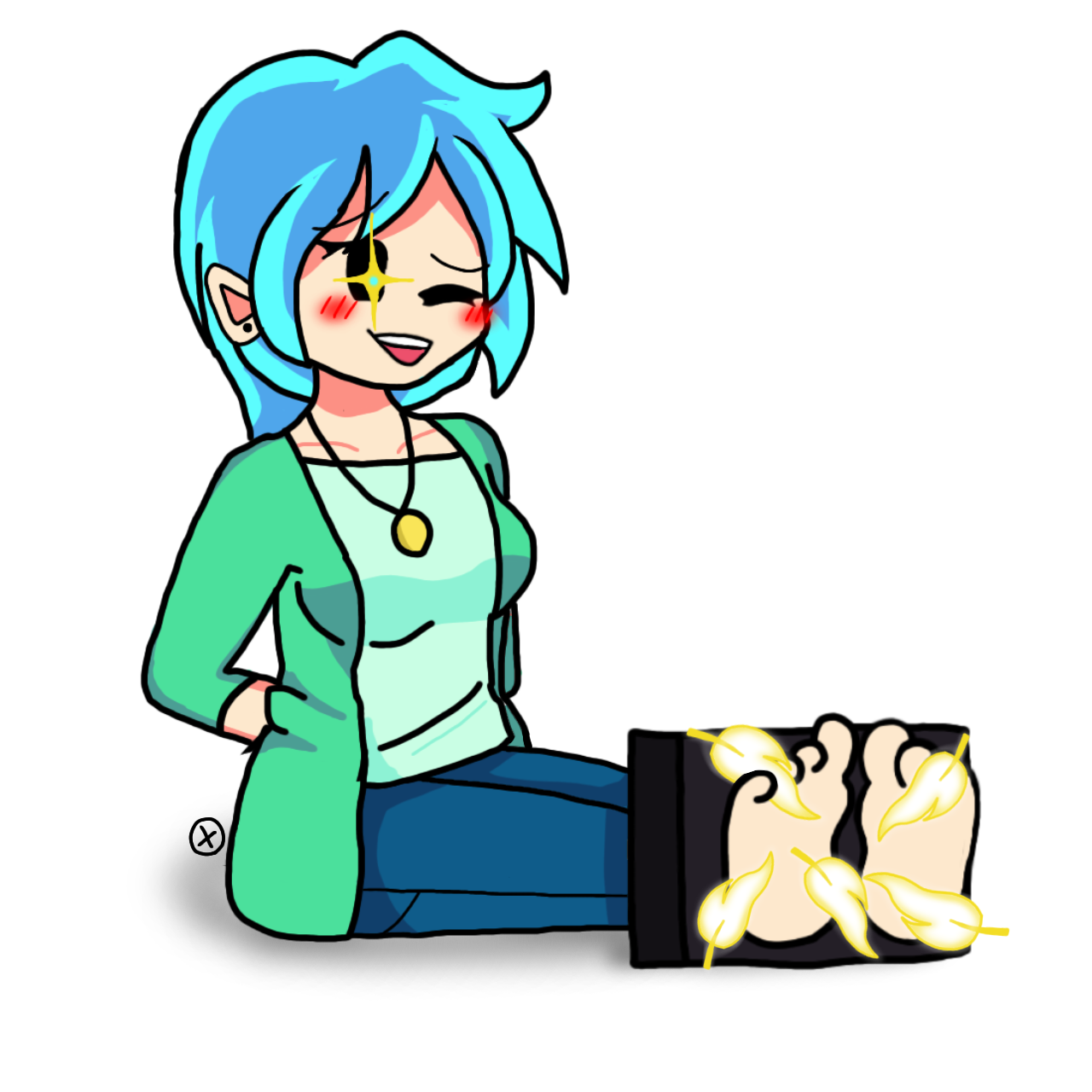Have you ever wondered why "mom feet tickle" moments bring so much laughter and joy to families? Whether it’s during playtime or a spontaneous burst of fun, these lighthearted interactions create lasting memories. Moms often use tickling as a way to bond with their kids, and it’s not just about the giggles—it’s about fostering connection, trust, and love. Tickle sessions can turn even the most ordinary days into extraordinary ones, leaving everyone smiling from ear to ear.
Tickling is more than just a playful activity; it’s a universal language of affection that transcends age and culture. From the youngest toddlers to older kids, "mom feet tickle" moments can serve as a bridge between generations, bringing families closer together. These moments are not only fun but also help in developing emotional intelligence and social skills in children. The laughter that ensues during these playful interactions releases endorphins, the body's natural feel-good chemicals, which contribute to a sense of well-being.
But what makes "mom feet tickle" so special? It’s the element of surprise, the shared joy, and the physical closeness that makes it a cherished activity for many families. Whether it’s a quick tickle during a morning routine or a full-blown tickle fight on a lazy Sunday afternoon, these moments are priceless. In this article, we’ll explore the science behind tickling, its benefits, and how you can make the most of these joyful interactions with your loved ones.
Read also:Bobby Walker Gacy The Untold Story Of His Life And Legacy
Table of Contents
- What Makes Mom Feet Tickle So Special?
- How Can Tickling Help Strengthen Family Bonds?
- Why Do People Love Being Tickled?
- What Are the Science and Psychology Behind Tickling?
- How to Make Mom Feet Tickle Sessions More Fun
- Can Tickling Have Any Negative Effects?
- What Are Some Alternative Ways to Bond with Your Kids?
- Frequently Asked Questions About Mom Feet Tickle
What Makes Mom Feet Tickle So Special?
When it comes to "mom feet tickle," there’s something uniquely magical about the experience. It’s not just about the physical act of tickling; it’s about the emotional connection that comes with it. Moms often use tickling as a way to express love, affection, and care. The feet, being one of the most sensitive parts of the body, are particularly responsive to tickling, making the experience even more enjoyable.
Tickling creates a sense of vulnerability and trust between the tickler and the ticklee. When a child allows their mom to tickle their feet, they are essentially saying, “I trust you enough to let my guard down.” This trust is a cornerstone of strong family relationships. Moreover, tickling is an activity that requires physical proximity, which enhances the bond between family members. The laughter and joy that follow are simply the icing on the cake.
Another reason why "mom feet tickle" moments are special is that they are often spontaneous and unplanned. These unexpected bursts of fun can turn even the most mundane moments into something memorable. Whether it’s during a bedtime routine or while lounging on the couch, tickling sessions can brighten anyone’s day. The element of surprise adds an extra layer of excitement, making these moments even more cherished.
How Can Tickling Help Strengthen Family Bonds?
Tickling is not just a form of play; it’s a powerful tool for building stronger family relationships. When moms engage in "mom feet tickle" sessions with their kids, they are fostering a sense of security and belonging. These playful interactions help children feel loved and valued, which is essential for their emotional development. By engaging in tickling, moms are not only creating fun memories but also laying the foundation for a lifetime of trust and affection.
One of the key benefits of tickling is that it encourages physical touch, which is crucial for emotional well-being. Physical touch releases oxytocin, often referred to as the "love hormone," which promotes feelings of happiness and connection. When kids experience this during tickle sessions, they are more likely to feel secure and loved. This sense of security translates into stronger family bonds and healthier relationships.
Tickling also provides an opportunity for open communication. During these playful moments, kids are more likely to express their feelings and thoughts, knowing that they are in a safe and loving environment. Moms can use these opportunities to check in with their kids, ask about their day, and address any concerns they might have. This open line of communication is essential for maintaining strong family relationships.
Read also:Discover The Charm Of A Pitbull Named Princess A Complete Guide
Why Do People Love Being Tickled?
Have you ever wondered why "mom feet tickle" sessions are so universally loved? The answer lies in the unique combination of physical and emotional responses that tickling elicits. When someone is tickled, their nervous system is stimulated, triggering a cascade of sensations that are both pleasurable and invigorating. This stimulation often results in uncontrollable laughter, which is a natural response to the tickling sensation.
Tickling also taps into our primal instincts. From an evolutionary perspective, tickling may have served as a way to strengthen social bonds and ensure survival. When early humans engaged in tickling, it likely helped them form alliances and build trust within their communities. Today, this instinctual behavior continues to play a role in human interactions, particularly within families.
Another reason why people love being tickled is that it provides a temporary escape from stress and anxiety. The laughter that accompanies tickling releases endorphins, which are natural mood boosters. This release of feel-good chemicals can help reduce stress levels and improve overall well-being. For kids, in particular, tickling can be a way to release pent-up energy and emotions, making it a valuable tool for emotional regulation.
What Are the Science and Psychology Behind Tickling?
Tickling is a fascinating phenomenon that has intrigued scientists and psychologists for centuries. At its core, tickling is a complex interaction between the nervous system, the brain, and the body. When someone is tickled, their skin’s nerve endings send signals to the brain, which interprets these signals as both pleasurable and slightly uncomfortable. This dual response is what makes tickling such a unique experience.
The Role of the Nervous System in Tickling
The nervous system plays a crucial role in the tickling experience. When the skin is tickled, specialized nerve endings called mechanoreceptors detect the pressure and movement. These receptors send signals to the brain, specifically to the somatosensory cortex, which processes touch. The brain then interprets these signals as a tickling sensation, triggering a reflexive response such as laughter or squirming.
Interestingly, tickling is one of the few sensations that can trigger an involuntary response. This is because the brain perceives tickling as a potential threat, even though it is harmless. The body’s natural response is to laugh or move away, which is why it’s nearly impossible to tickle yourself. This unique interaction between the nervous system and the brain is what makes "mom feet tickle" sessions so enjoyable.
Why Does Laughter Accompany Tickling?
Laughter is an integral part of the tickling experience, but why does it happen? The answer lies in the brain’s response to tickling. When someone is tickled, the brain activates the same regions that are responsible for processing humor and pleasure. This overlap explains why tickling often results in uncontrollable laughter, even when the person being tickled is not consciously finding it funny.
Laughter also serves a social function. When someone laughs during a tickling session, it signals to others that they are enjoying the interaction. This social cue helps strengthen bonds and fosters a sense of connection. In the context of "mom feet tickle," laughter becomes a way for kids to express their joy and affection, making the experience even more meaningful.
How to Make Mom Feet Tickle Sessions More Fun
If you’re looking to take your "mom feet tickle" sessions to the next level, there are plenty of ways to make them even more enjoyable. Here are some tips to enhance the fun and create unforgettable memories:
- Incorporate props: Use feathers, soft brushes, or even a tickle stick to add variety to your tickling sessions. These props can make the experience more exciting and unpredictable.
- Create a tickle-friendly environment: Set the mood by playing upbeat music or dimming the lights. A cozy and relaxed atmosphere can make the experience more enjoyable for everyone involved.
- Set boundaries: While tickling can be a lot of fun, it’s important to ensure that everyone is comfortable. Make sure to check in with your kids and establish clear boundaries to avoid any discomfort.
By incorporating these tips, you can create a fun and safe environment for "mom feet tickle" sessions that everyone will enjoy.
Can Tickling Have Any Negative Effects?
While tickling is generally a positive and enjoyable experience, it’s important to be mindful of its potential negative effects. Over-tickling or tickling someone who is not comfortable can lead to feelings of distress or anxiety. It’s crucial to pay attention to the other person’s reactions and ensure that they are enjoying the experience.
Additionally, tickling can sometimes trigger a fight-or-flight response, especially if it’s prolonged or intense. This response can cause the person being tickled to feel overwhelmed or even panicked. To avoid these negative effects, it’s essential to keep tickling sessions light and playful, and to always respect the other person’s boundaries.
What Are Some Alternative Ways to Bond with Your Kids?
While "mom feet tickle" sessions are a great way to bond with your kids, there are plenty of other activities that can strengthen your relationship. Here are some alternative ways to connect with your children:
- Storytelling: Spend quality time reading or creating stories together. This activity fosters creativity and imagination while strengthening your bond.
- Outdoor adventures: Go on hikes, bike rides, or picnics to enjoy the great outdoors together. These experiences create lasting memories and promote physical activity.
- Arts and crafts: Engage in creative projects such as painting, drawing, or building models. These activities encourage self-expression and teamwork.
Frequently Asked Questions About Mom Feet Tickle
Why Do Kids Love Being Tickled by Their Moms?
Kids love being tickled by their moms because it creates a sense of security and trust. The physical closeness and laughter that accompany tickling sessions make these moments enjoyable and memorable.
Is Tickling Safe for Kids?
Tickling is generally safe for kids as long as it’s done in moderation and with their consent. It’s important to pay attention to their reactions and ensure they are comfortable throughout the experience.
How Can I Make Tickling More Fun?
You can make tickling more fun by incorporating props, creating a tickle-friendly environment, and setting clear boundaries to ensure everyone is comfortable and enjoying the experience.
In conclusion, "mom feet tickle" moments are a wonderful way to bond with your kids and create lasting memories. By understanding the science and psychology behind tickling, you can make these interactions even more enjoyable and meaningful. So, the next time you’re looking for a fun activity to do with your kids, why not try a tickle session? You’ll be amazed at the joy and laughter it brings!
For more information on the benefits of tickling, check out

